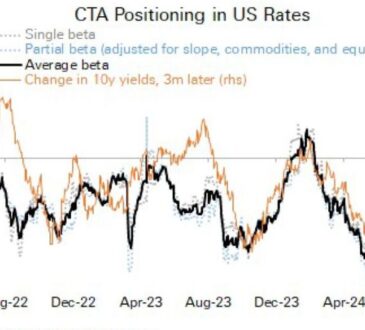
The US dollar appreciated on Thursday after encouraging US growth data reduced fears of a recession. Second-quarter gross domestic product growth was revised higher to a 3% annualized rate, up from an initial estimate of 2.8%, according to the Commerce Department’s Bureau of Economic Analysis. The faster pace was driven by growth in consumer spending, which was revised up to a 2.9% annualized rate from the previously reported 2.3%.
The data helped the greenback recover some ground, but at the time of writing, the US dollar index (DXY) was still down by 3% over the past month and trading near the bottom of the range that has prevailed since that start of 2023. We still expect the dollar to decline further in the coming months for several reasons:
The balance of risks for the USD appears skewed to the downside. Investor focus will now shift to Friday’s US personal consumption expenditures price index, the Fed’s preferred measure of inflation, and next week’s nonfarm payrolls report. A tick higher in inflation or a stronger US labor market report is unlikely to take the Federal Reserve’s expected September rate cut off the table, in our view. However, if the inflation or labor market data are weaker than expected, then the likelihood of a 50-basis-point cut would rise.
Interest rate differentials look set to narrow. Some other top central banks are also likely to cut rates in the coming weeks, though less aggressively than the Fed. The Swiss National Bank, for instance, is expected to end its easing cycle with a final cut in September. The Bank of England and the European Central Bank look set to continue cutting rates, but are likely to take a more gradual approach than the Fed. Meanwhile, the Reserve Bank of Australia is unlikely to start easing until next year, in our view. The narrowing yield differentials should see the US dollar depreciate against the currencies of its trading partners.
The US fiscal deficit remains a concern. While momentum in the US presidential race appears to have shifted in favor of Vice President Kamala Harris, the growing US federal deficit is likely to come under the spotlight regardless of who wins the White House. Indeed, the Congressional Budget Office recently projected that interest costs on US debt are set to exceed defense spending this year. In our view, fears about the size of the US fiscal deficit will be a headwind for the US dollar over the longer term.
Against this backdrop, we recently shifted the US dollar to Least Preferred in our global strategy and moved the euro, the British pound, and the Australian dollar to Most Preferred. We expect all of them to regain ground against the US dollar over our forecast horizon; our June 2025 forecasts are for 1.16 EURUSD, 1.38 GBPUSD, and 0.70 AUDUSD. The Swiss franc remains among our Most Preferred currencies based on narrowing interest rate differentials and the franc’s defensive qualities in a portfolio context amid political uncertainty in the US and parts of Europe. Our June 2025 forecast for USDCHF is 0.80.




